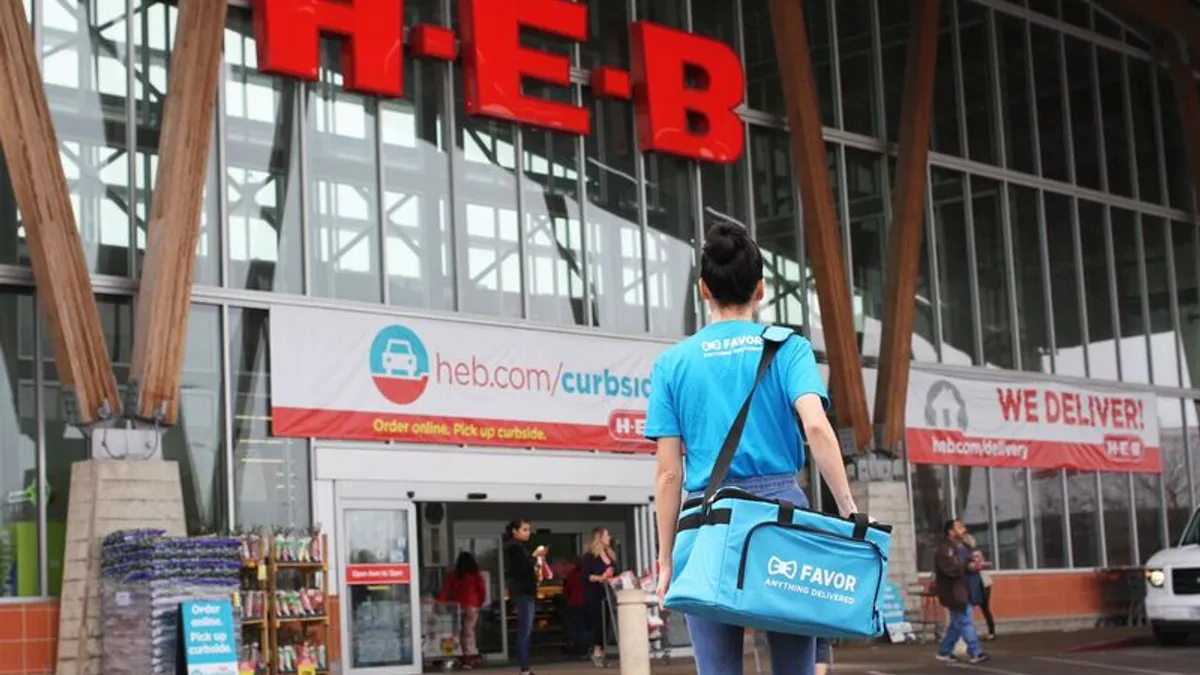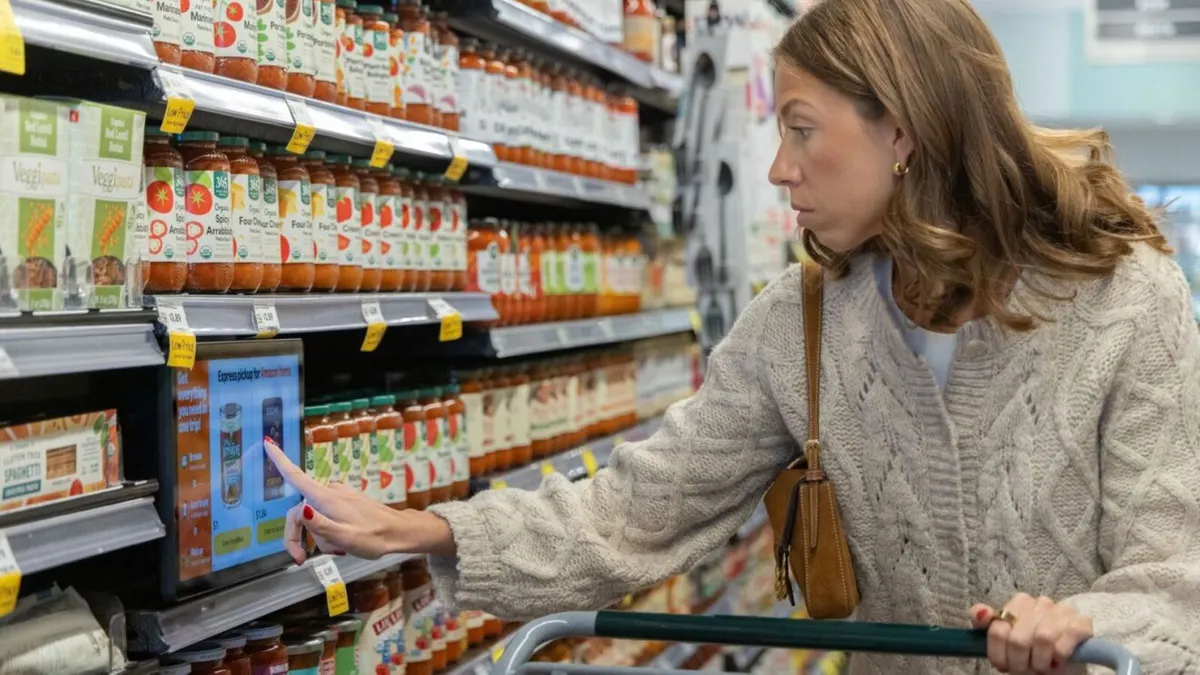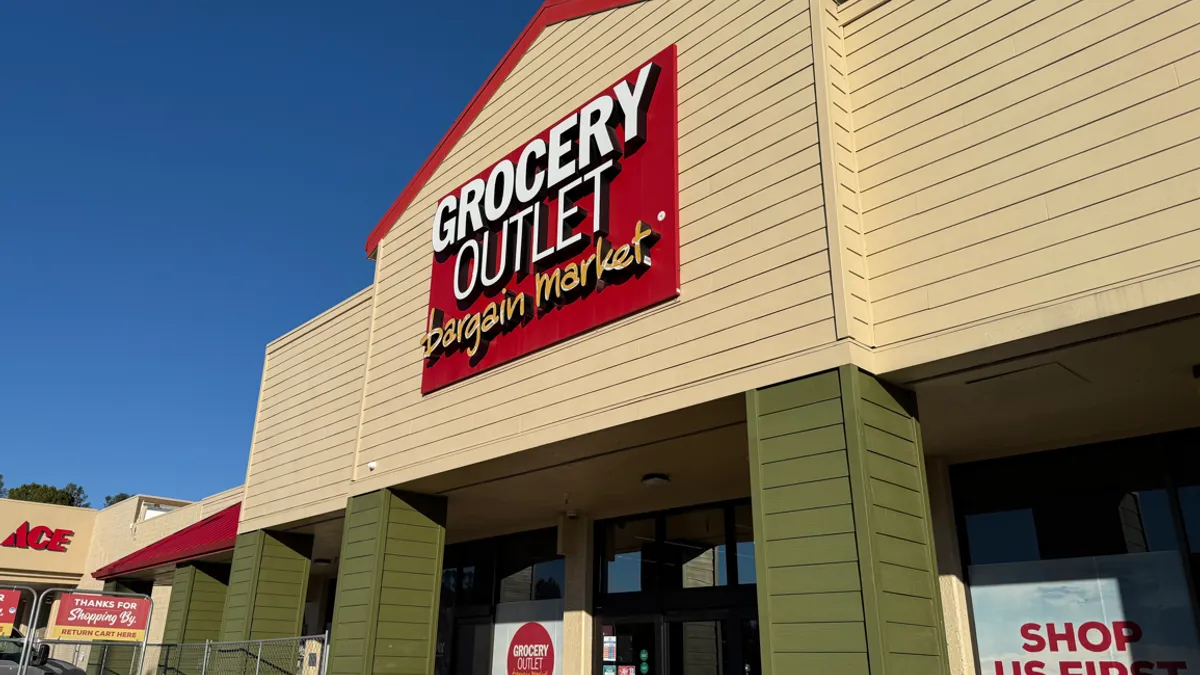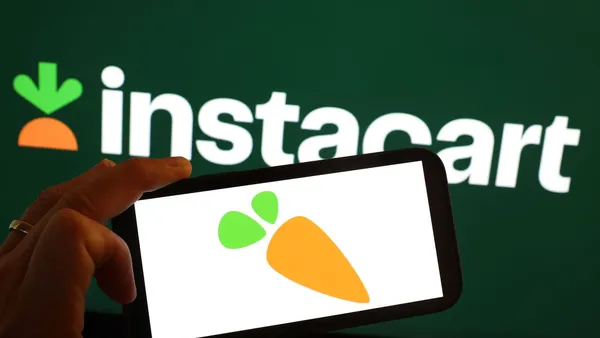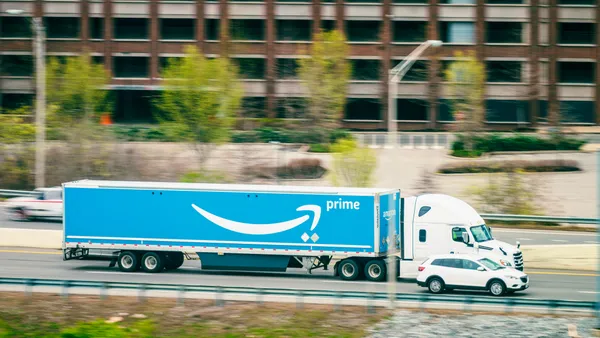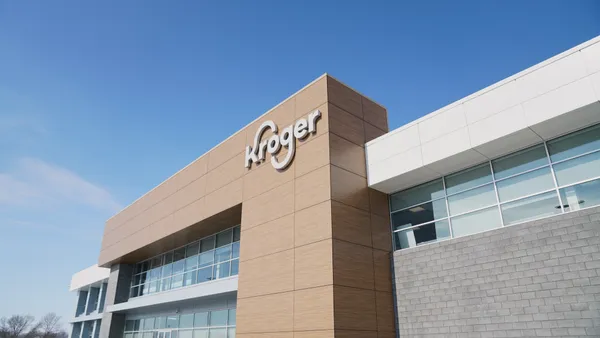Dive Brief:
- Online grocery sales in the U.S. rose almost 19% year over year in December, to $9.6 billion, Brick Meets Click and Mercatus reported Monday.
- Delivery sales were up by almost a quarter in December compared with the same month in 2023, to $4 billion, while pickup sales increased about 5%, to $3.8 billion. Ship-to-home sales surged 40%, to $1.8 billion.
- The online grocery market took off during the latter months of 2024, fueled by sharp discounts from retailers on subscription and membership fees, the firms said.
Dive Insight:
Grocery e-commerce grew across the board during the final weeks of 2024, but delivery solidified its position while pickup lost ground, according to Brick Meets Click.
Overall online grocery sales roared ahead by almost 18% in the second half of 2024 on a year-over-year basis after moving ahead by just a fraction of a percent during the first six months of the year.
Delivery comprised nearly 42% of grocery e-commerce sales last month, up from slightly less than 40% in December 2023. Meanwhile, pickup claimed about 39% of the market last month, just below its share during the same period in the prior year. The ship-to-home channel, which represents orders delivered by third parties such as UPS and FedEx, claimed just under 19% of the grocery e-commerce market, well above its 16% share in December 2023.
Mass retailers fared better online than traditional food retailers in December, continuing a monthslong trend that has seen companies like Walmart bolster their position in the grocery e-commerce space. More than half of all shoppers who bought groceries digitally last month placed at least one order with a mass retailer, while only a third directed online business to a supermarket or hard discounter, Brick Meets Click said.
The data also showed that shoppers who placed an online grocery order with a mass retailer were more likely to direct additional business to that retailer within 30 days than people who bought groceries online from a supermarket. In a promising sign for supermarkets, the gap in the repeat intent rates between grocers and mass retailers narrowed in December compared with the same period a year ago.
"Regional grocers looking to boost eGrocery sales should focus on delivering real savings and targeted loyalty perks,” Mark Fairhurst, chief growth marketing officer at Mercatus, said in a statement. “By leveraging AI-driven personalization and integrated loyalty solutions, grocers can convert occasional shoppers into loyal digital customers, driving repeat orders and larger baskets across both online and in-store channels, to fuel sustained growth.”
The data stems from a survey of 1,694 grocery shoppers Brick Meets Click conducted Dec. 30-31.


